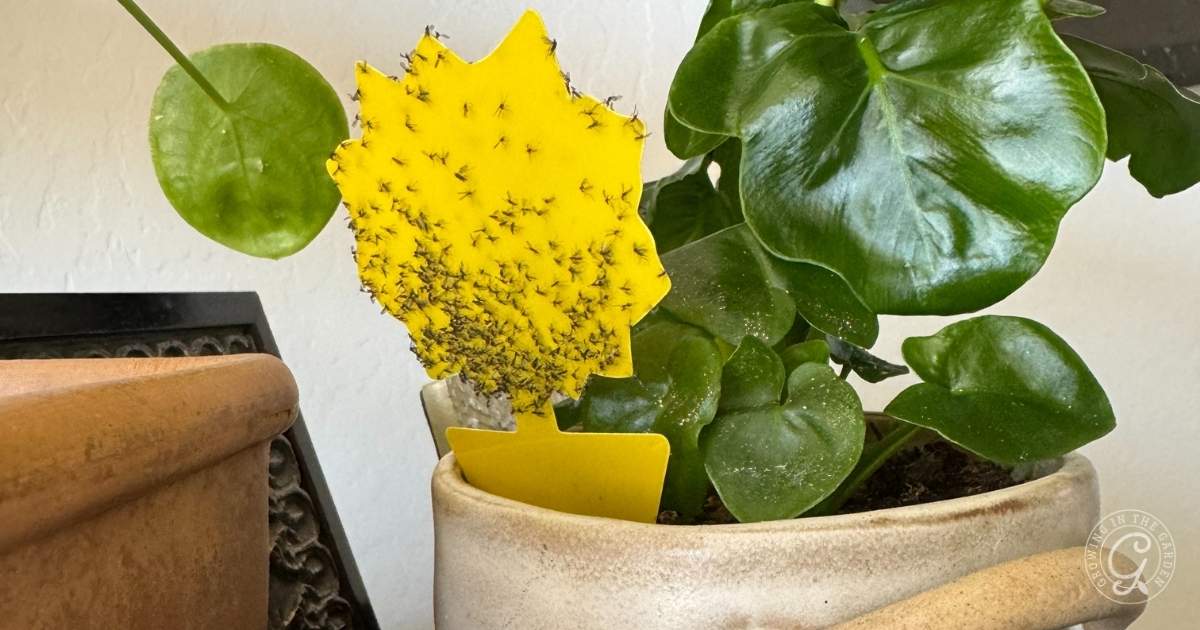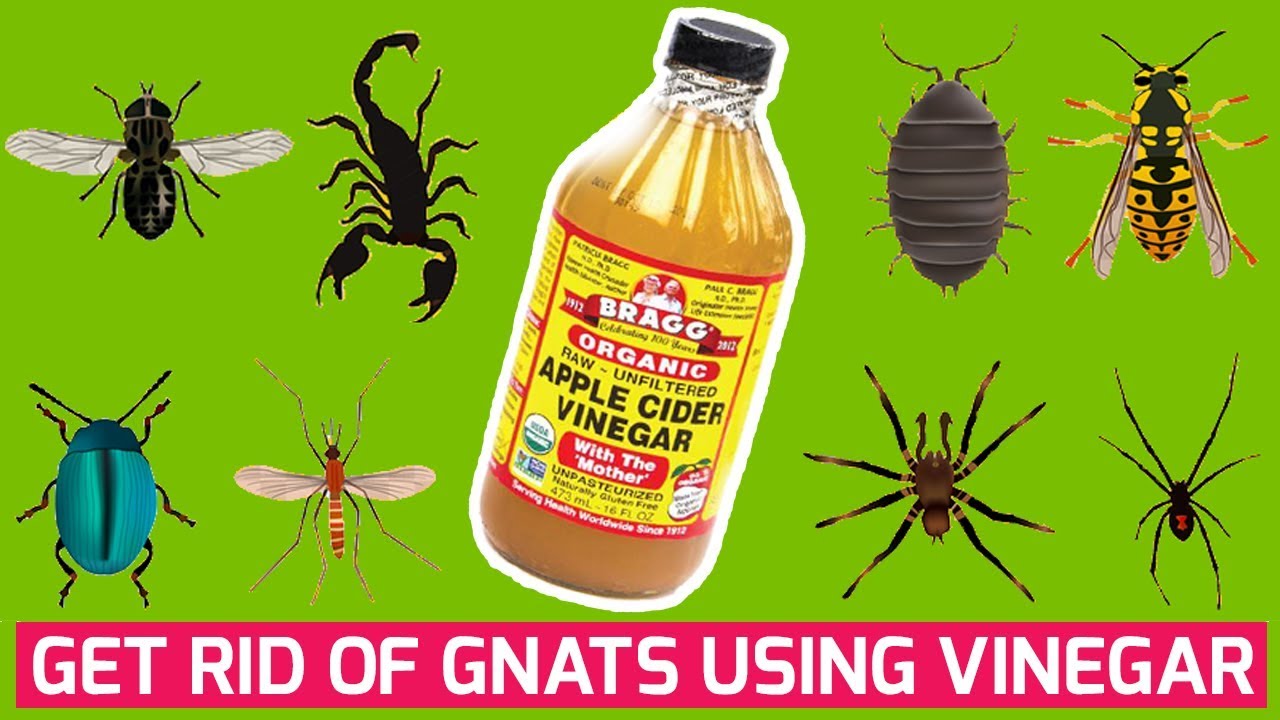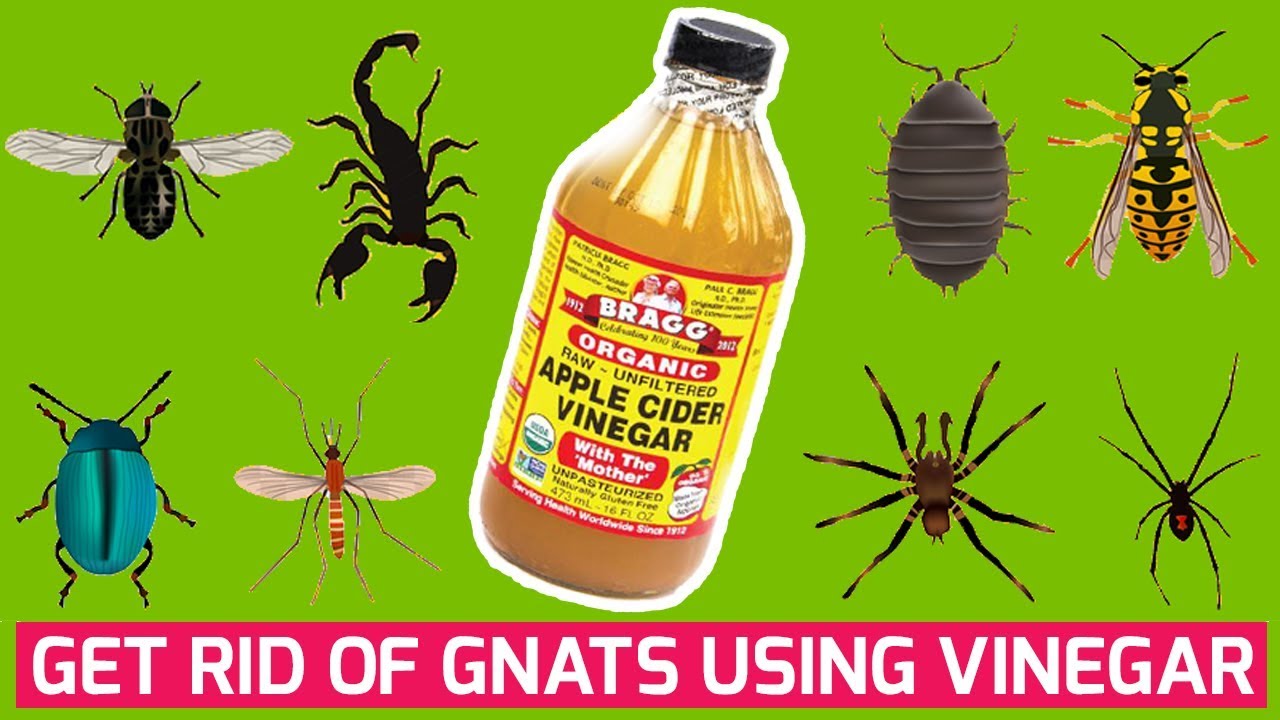How to Use Vinegar to Get Rid of Gnats in Plants: Tiny, pesky gnats swarming around your beloved houseplants can be a frustrating sight. These tiny insects are attracted to the moist soil and decaying organic matter often found in potted plants, leading to infestations that can quickly become a nuisance.
Fortunately, there’s a simple and effective solution: vinegar. Vinegar’s acidic properties make it a natural repellent, deterring gnats and even eliminating them with a homemade trap.
This article will delve into the science behind using vinegar to control gnats, explore different types of vinegar and their effectiveness, and guide you through creating a DIY trap. We’ll also discuss the optimal placement and maintenance of these traps, along with additional natural methods to combat gnats and prevent future infestations.
Understanding Gnats and Their Attraction to Plants

Gnats are small, flying insects that are often a nuisance to plant owners. They can be found in a variety of habitats, including gardens, greenhouses, and even indoors. While most gnats are harmless, they can be annoying and sometimes even damaging to plants.
Gnats are attracted to plants for several reasons, including the presence of moisture, decaying organic matter, and certain types of plants. Understanding the factors that attract gnats to plants is essential for preventing and controlling infestations.
The Life Cycle of Gnats
Gnats undergo a complete metamorphosis, which means they have four distinct stages in their life cycle: egg, larva, pupa, and adult. * Eggs:Gnats lay their eggs in moist environments, such as soil, compost, or decaying organic matter.
Larvae
The eggs hatch into larvae, which are small, worm-like creatures that feed on decaying organic matter.
Pupae
After feeding, the larvae pupate, forming a hard, protective casing.
Adults
Adult gnats emerge from the pupae and are capable of flying and reproducing.
Common Types of Gnats That Infest Plants
Several types of gnats are commonly found infesting plants. Some of the most common include:* Fungus Gnats:These gnats are small, black, and often found in moist soil. They are attracted to decaying organic matter and can damage plant roots.
Shore Flies
These gnats are slightly larger than fungus gnats and have a more distinct, darker coloration. They are attracted to decaying organic matter and can also be found near water sources.
Drain Flies
These gnats are small, gray, and have hairy wings. They are commonly found in drains and sewers and are attracted to decaying organic matter and moisture.
Factors That Attract Gnats to Plants
Several factors can attract gnats to plants, including:* Moisture:Gnats are attracted to moist environments, such as damp soil, overflowing pots, and water sources.
Decaying Organic Matter
Gnats are attracted to decaying organic matter, such as compost, rotting leaves, and dead insects.
Certain Types of Plants
While vinegar is an effective remedy for pesky gnats, remember to keep your plants healthy to prevent infestations in the first place. For a touch of winter cheer, consider adding some blooming hanging plants like those found in our Hanging Plants That Bloom in Winter guide.
These beauties will not only brighten your home but also attract beneficial insects that help control gnats naturally. Keep your plants thriving and say goodbye to those annoying gnats!
Some plants are more susceptible to gnat infestations than others. Plants that are prone to root rot or have a high moisture content are particularly attractive to gnats.
Preventing Gnat Infestations
Preventing gnat infestations is easier than controlling them. Here are some tips for preventing gnats from infesting your plants:* Use Well-Draining Soil:Ensure your plants are planted in well-draining soil to prevent waterlogging.
Avoid Overwatering
Water your plants only when the soil is dry to the touch.
Remove Decaying Organic Matter
Regularly remove any decaying organic matter from your plants and surrounding areas.
Use Yellow Sticky Traps
Yellow sticky traps can help capture and monitor gnat populations.
Keep Plants Away From Water Sources
Avoid placing plants near water sources, such as sinks, drains, or ponds.
Vinegar as a Gnat Repellent: How To Use Vinegar To Get Rid Of Gnats In Plants
Vinegar, a common household ingredient, can be a surprisingly effective weapon against pesky gnats. Its acidic nature and pungent aroma make it an effective deterrent, attracting gnats and trapping them.
Vinegar’s Properties as a Gnat Repellent, How to Use Vinegar to Get Rid of Gnats in Plants
Vinegar’s effectiveness as a gnat repellent stems from its acidic nature and pungent odor. Gnats are attracted to the sweet scent of vinegar, but the acidity traps them. The vinegar’s strong aroma masks the scent of plants, making them less appealing to gnats.
Types of Vinegar for Gnat Repellent
While any type of vinegar can be used as a gnat repellent, apple cider vinegar and white vinegar are particularly effective. Apple cider vinegar has a stronger, sweeter scent that attracts gnats more effectively. White vinegar, on the other hand, is a more potent acid, making it more effective at trapping them.
Creating a Vinegar-Based Gnat Trap
A simple vinegar-based gnat trap can be easily created with readily available materials. Here’s a step-by-step guide:
1. Choose a container
Select a shallow container, such as a bowl or jar, with a wide opening.
2. Fill the container with vinegar
Pour about 1-2 inches of vinegar into the container.
3. Add a sweetener
To enhance the trap’s effectiveness, add a teaspoon of sugar or honey to the vinegar. This will further attract gnats.
4. Create a funnel
Cut a piece of cardboard or paper into a funnel shape. The wider end should be larger than the container’s opening, and the narrow end should fit snugly inside.
5. Secure the funnel
Position the funnel over the container, ensuring the narrow end is submerged in the vinegar.
6. Place the trap
Place the trap near your plants or in areas where gnats are prevalent.
7. Monitor and refresh
Regularly check the trap for trapped gnats and refresh the vinegar mixture as needed.
Vinegar Trap Recipe
The following table Artikels the ingredients and proportions for a basic vinegar-based gnat trap:
Ingredient |
Quantity |
|---|---|
Vinegar (apple cider or white) |
1-2 inches |
Sugar or Honey |
1 teaspoon |
Applying Vinegar Traps

Vinegar traps are a simple and effective way to lure and capture gnats, reducing their population around your plants. These traps work by attracting gnats to the vinegar’s scent, which they find irresistible. Once the gnats are drawn in, they become trapped within the container, unable to escape.
Placement of Vinegar Traps
The placement of vinegar traps is crucial for maximizing their effectiveness. Positioning them strategically ensures that the traps are in the optimal locations to attract the gnats.
- Near Infested Plants:Place the traps close to the plants that are most heavily infested with gnats. This will maximize the chances of attracting the gnats to the traps. For instance, if you have a houseplant with a significant gnat problem, place the vinegar trap near the base of the plant, where the gnats are most likely to congregate.
- Areas with High Gnat Activity:Observe your plants and identify areas where you notice a high concentration of gnats. These could be spots near windows, doors, or areas with standing water. Position your vinegar traps in these areas to target the gnats directly.
- Ground Level:Gnats tend to be attracted to the ground, so placing the traps near the soil level is beneficial. This allows the gnats to easily detect the vinegar’s scent and fly towards the traps.
Optimal Locations for Vinegar Traps
The placement of vinegar traps should consider the specific environment and the location of the infested plants.
- Windowsills:Place the traps on windowsills, as gnats often congregate near windows, seeking light and warmth.
- Near Drainage Holes:Position the traps near the drainage holes of potted plants, as this is where gnats often lay their eggs. The traps can help to capture adult gnats and reduce the breeding population.
- On Plant Trays:Place the traps on the trays beneath potted plants, as gnats are often attracted to the moisture and organic matter that accumulate in these trays.
- Near Compost Bins:If you have a compost bin, placing vinegar traps nearby can help to capture gnats that are attracted to the decomposing organic matter.
Maintaining Vinegar Traps
Maintaining the vinegar traps is essential for ensuring their effectiveness. Regularly checking and refreshing the vinegar solution helps to keep the traps working optimally.
- Check the Trap Regularly:Inspect the traps daily or every other day to see if there are any gnats trapped inside. Remove any dead gnats to prevent them from decomposing and creating an unpleasant odor.
- Refresh the Vinegar Solution:The vinegar solution should be refreshed every 2-3 days. The vinegar’s scent weakens over time, and a fresh solution will attract more gnats.
- Clean the Trap:Wash the trap with soap and water every week or so to remove any accumulated debris or dead gnats. This will help to keep the trap clean and functioning properly.
Frequency of Refreshing Vinegar Solution
The frequency of refreshing the vinegar solution depends on several factors, including the severity of the gnat infestation, the temperature, and the type of vinegar used.
The general rule of thumb is to refresh the solution every 2-3 days. However, if the gnat infestation is severe, you may need to refresh the solution more frequently, such as every day or every other day.
Additional Gnat Control Methods
While vinegar traps are an effective method for controlling gnats, several other natural and chemical methods can help you eliminate these pesky insects from your plants.
Vinegar is a natural and effective way to deter pesky gnats from your plants. While you’re battling these flying pests, consider adding some eye-catching greenery to your outdoor space with hanging plants. For inspiration on the best hanging plants to brighten your summer, check out The Best Outdoor Hanging Plants for Summer.
Once you’ve chosen your new additions, remember to keep the soil moist and avoid overwatering, as this can attract gnats.
Alternative Natural Methods
Beyond vinegar traps, other natural methods can help control gnats in your plants. These methods often focus on disrupting the gnats’ life cycle or creating an unfavorable environment for them.
- Yellow Sticky Traps:These traps attract gnats with their bright yellow color and sticky surface, effectively trapping them and preventing them from reproducing.
- Diatomaceous Earth:This naturally occurring powder made from fossilized diatoms is a safe and effective insecticide. When applied to the soil surface, it dehydrates and kills gnats by damaging their exoskeletons.
- Neem Oil:This natural oil derived from the neem tree is a potent insecticide that disrupts the growth and development of gnats. Dilute neem oil with water and apply it to the soil and plants to repel and kill gnats.
- Beneficial Nematodes:These microscopic worms are natural predators of gnat larvae. They can be applied to the soil to control gnat populations.
- Mosquito Dunks:These slow-release tablets contain a bacteria that kills mosquito larvae, which can also be effective against gnat larvae.
Essential Oils for Repelling Gnats
Certain essential oils possess properties that repel gnats, making them a natural and effective alternative to chemical insecticides. These oils work by masking the scents that attract gnats, creating an unfavorable environment for them.
- Peppermint Oil:This oil’s strong scent is known to repel gnats, and it can be used to create a natural gnat repellent spray. Simply mix a few drops of peppermint oil with water and spray it around your plants.
- Lavender Oil:Lavender oil’s calming scent is also effective in repelling gnats. Add a few drops to a spray bottle filled with water and mist your plants.
- Tea Tree Oil:This oil is known for its antimicrobial properties and can also repel gnats.
- Citronella Oil:This oil is a common ingredient in mosquito repellents, and it can also be effective against gnats.
Plants that Naturally Repel Gnats
Some plants naturally repel gnats, making them ideal for your garden or home. These plants release scents or contain compounds that deter gnats, creating a natural barrier against these pests.
- Basil:This herb’s strong scent is known to repel gnats and other insects.
- Catnip:Catnip’s strong aroma, while attractive to cats, is also effective in repelling gnats.
- Lavender:Lavender’s calming scent is not only pleasing to humans but also a natural gnat repellent.
- Rosemary:This herb’s strong, pungent scent is known to repel gnats and other insects.
- Marigolds:Marigolds release a strong scent that repels gnats and other pests.
Comparison of Gnat Control Methods
Method |
Pros |
Cons |
|---|---|---|
Vinegar Traps |
Effective, inexpensive, safe for pets and children |
May not eliminate all gnats, requires regular maintenance |
Yellow Sticky Traps |
Effective, easy to use |
Can be unsightly, may trap beneficial insects |
Diatomaceous Earth |
Natural, safe for pets and children, effective against larvae |
May require multiple applications, can be messy |
Neem Oil |
Natural, effective against gnats and other pests |
Can be toxic to beneficial insects, requires careful application |
Beneficial Nematodes |
Natural, effective against larvae, environmentally friendly |
Requires specific soil conditions, may be expensive |
Mosquito Dunks |
Effective against larvae, slow-release formula |
May not be effective against adult gnats |
Essential Oils |
Natural, safe for pets and children, pleasant scents |
May not be as effective as other methods, requires frequent application |
Repellent Plants |
Natural, aesthetically pleasing, long-lasting |
May not be effective against all gnat species, may not be suitable for all environments |
Preventing Gnat Infestations
Proactive measures are crucial in preventing gnat infestations, saving you the hassle of dealing with these pesky insects. By implementing simple yet effective practices, you can create an environment that is less hospitable to gnats, reducing their chances of establishing a colony in your plants.
Maintaining Plant Hygiene
Keeping your plants clean is essential in preventing gnat infestations. Gnats are attracted to decaying organic matter, which can accumulate in the soil and provide a breeding ground for them.
- Regularly remove any dead leaves, stems, or flowers from your plants. These decaying materials can attract gnats and provide them with a source of food.
- Clean any spills or drips of water from the plant pots and surrounding areas. These moisture sources can create ideal conditions for gnats to thrive.
- Avoid over-fertilizing your plants. Excess fertilizer can lead to the buildup of organic matter in the soil, which can attract gnats.
Soil Drainage
Gnats prefer moist environments, and poorly draining soil can create the perfect breeding ground for them. Ensuring good soil drainage is crucial in preventing gnat infestations.
- Use a potting mix that is well-draining. Avoid using heavy clay-based soils, as they can retain too much moisture.
- Ensure your pots have drainage holes at the bottom to allow excess water to escape. If your pots lack drainage holes, you can drill them yourself.
- Consider using a layer of gravel or pebbles at the bottom of the pot to improve drainage. This will help prevent the roots from sitting in water.
Watering Practices
Watering practices play a significant role in gnat prevention. Overwatering is a common cause of gnat infestations, as it creates a moist environment that gnats thrive in.
- Water your plants thoroughly but only when the soil is dry to the touch. Avoid watering on a regular schedule, as the soil may not always need it.
- Allow the excess water to drain out of the pot after watering. This prevents the soil from becoming waterlogged.
- Consider using a watering can with a long spout to water directly at the base of the plant, minimizing the amount of water that comes into contact with the soil surface.
Choosing the Right Potting Mix
The potting mix you use can also influence the likelihood of a gnat infestation. Some potting mixes are more prone to retaining moisture, creating favorable conditions for gnats.
- Select a potting mix that is specifically designed for drainage and aeration. Look for mixes that contain ingredients like perlite or vermiculite, which help improve drainage and reduce moisture retention.
- Avoid using potting mixes that are heavy and dense, as they can retain too much water.
- Consider using a pre-mixed potting mix that includes a gnat repellent. These mixes contain ingredients that deter gnats and help prevent infestations.
Epilogue
By understanding the life cycle of gnats, their attraction to plants, and the effectiveness of vinegar as a repellent, you can effectively control these pesky insects. Implementing a combination of vinegar traps, proper plant hygiene, and other natural methods will help create a healthy environment for your plants while keeping gnats at bay.
Remember, consistent effort and a proactive approach are key to maintaining a gnat-free home.
Answers to Common Questions
Is apple cider vinegar better than white vinegar for gnat traps?
Both apple cider vinegar and white vinegar are effective for gnat traps. Apple cider vinegar might attract more gnats due to its sweeter scent, but both types work well.
How long do vinegar traps last?
Vinegar traps should be refreshed every 2-3 days to maintain their effectiveness. The vinegar solution can lose its potency over time.
Can I use vinegar traps outside?
Vinegar traps are primarily used indoors to control gnats in houseplants. While they can be used outdoors, their effectiveness may be limited by weather conditions and other factors.

